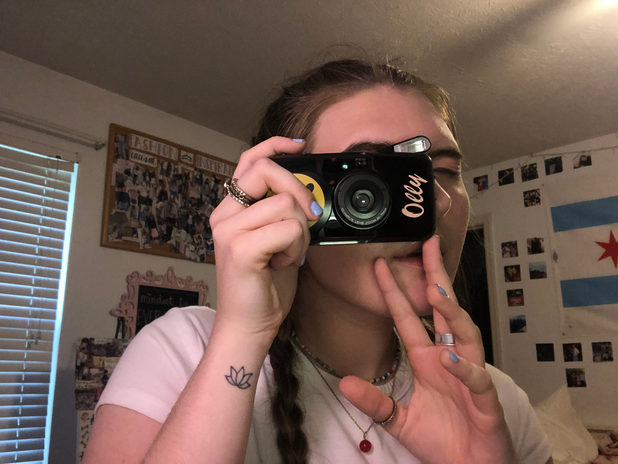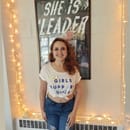Recently, the United Feminist Movement had a protest on the steps of Burruss Hall to protest how the university has handled assaults at campus events. I took hundreds of photos, just not of me. I was torn on even being there. While part of me wanted to shout my story from the rooftops, I was hanging back — sitting just far enough away that the survivors’ speeches could barely be heard. I was still too afraid to fully acknowledge what I had been through and the ensuing PTSD. Being this close was making me anxious. My hands were shaking slightly as I held onto my phone and avoided looking straight at the crowd. If the photos ever make it onto my Instagram, they will tell an entirely different story. To some, they’ll show a day in my life out in the world. To others, they will be a nod to the nights spent crying and shaking to the nightmares I still have, to the conference call I had with friends when I got my official PTSD diagnosis, and to the discussing of lawyers and lawsuits. Even with a thousand words or a million photos, I don’t think I could ever fully express how PTSD and anxiety have affected my life. However, I want to try to explain the stories behind the pictures on my social media and the hundreds more on my camera roll.
I never really liked pictures. Every flaw was magnified. I thought my smile was dorky, revealing a double chin that put most to shame. My nose looked too big and my face too fat. No matter the pose, I looked lumpy and short, so I started taking purposefully ugly pics. They were ones where my face was scrunched up, sticking my tongue out or posing exaggeratedly. They were goofy and showed a lot of my character. Eventually, I even started thinking I looked beautiful — Instagram worthy. Most importantly, I recognized myself in them. That recognition is something my PTSD loved to toy with.
After the assault, my camera roll was filled with thousands of selfies, none of which appeared on Instagram. I wasn’t trying to capture the moment. I just wanted to recognize myself. I could spend hours staring in the mirror looking at the freckles that dotted my face and the scar by my left eye. Logically, I knew I was me. Mentally, I couldn’t see myself. Something behind my eyes seemed sad. I thought I was stressed, and it would blow over in time. It wasn’t until a few years later I realized I had been assaulted. There are three photos from that period in my life, and they were all of the group photos I posted out of pride in my sorority and love for my little. Even in those, I look distant and confused, but I was having a good time at least. Eventually, I had separated myself from my assailant enough that I had begun to recover.
My Instagram came alive with a trickle of recruitment photos and outfits of the day. I was always smiling brightly, beginning to even show teeth. Finally embracing my affectionately named “chipmunk cheeks,” one of my friends even messaged me to tell me how much happier I looked. What was not pictured were the flashes of anxiety and PTSD I chalked up to stress and being overdramatic. When men touched me, I would endure the affection while being completely frozen. I would internally rationalize that at least it would be over soon, and I tried not to cry. Multiple friends took me aside to say it sounded like I had been assaulted, but I always explained it away until I couldn’t anymore. Funnily enough, I actually have before and after pictures from the night I realized I had been assaulted.
I was at a birthday party, posing for pictures and smiling brightly. Hours later, I was crying harder than I ever had before. I refused to be touched. My poor stunned date could only watch from afar and bring me paper towels when I ran out of tissues. The photos stopped after that. For a time, I even hated my body. I hated that it was physical and tangible and that I had let it happen. I thought I should have fought harder and said “no” louder. My days were filled with avoiding my mirror, my nights spent crying and shaking. I wished I wasn’t a woman and that no man would ever touch me again. I was swearing off sex forever.
It wasn’t pictured, but I did have sex again. At first, it was followed by crying and then with passion. It was almost like the old times. Looking back at older photos, it isn’t the massive cheeks or questionable fashion I see, but I see a version of myself I can’t get back. I’m glad I have those memories to look back on — to remind myself that I existed before the assault.
I cherish my post-assault and post-PTSD pictures too. I exist after the assault too, smarter and stronger. I can finally take selfies again and recognize myself. My new profile picture on Instagram and Her Campus is of me smiling, as my brother cracked a joke, with a smile so genuine I don’t care about my hooked nose, chubby cheeks or massive forehead. I don’t even care about my recently missing tooth. Now, I even have a backlog of photos documenting my experiences with friends. Each photo is proof that for every bad day I also have good ones where I get out of the house and live. For every day I feel alone, I also have days where I’m surrounded by love and support.
The panic attacks and dissociation haven’t stopped, but it’s more manageable. This summer, I had one right before a trip to DC, as those of you who follow my Instagram might have noticed. It was just a simple picture of my camera roll, and it was only on my story. It documented the transition as my photos went from pre- to post-panic attack. They started out innocuously enough, me enjoying the sights. Then, photos of my red tear-stained face, my antianxiety meds, and screenshots of a conversation I had with a mental health hotline came. Even without the humorous caption, it was a pretty wordy picture. I never meant it to, but my Instagram tells a detailed look at my mental health, especially if you know where to look. Those photos showed how I used to be, my struggles following the assault, and all of those who have helped me along the way. I choose the pictures I post, the stories I tell and my life. I originally thought control was something I lost in the assault — first to my assailant and then to PTSD. It’s not, and my Instagram is proof of that. While PTSD will always exist in the background and photobombing me in the worst ways, I am so much more than that. Perhaps, my next photo will be of me at the next protest in the fray, holding an appropriate sign and chanting. Maybe, I’ll even be one of the speakers.


